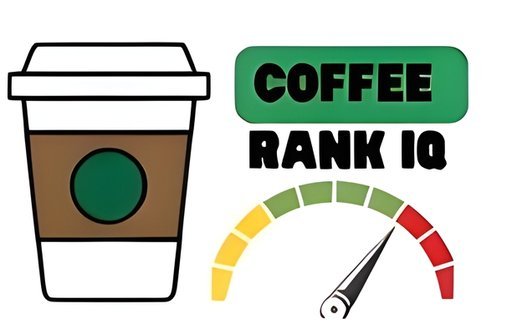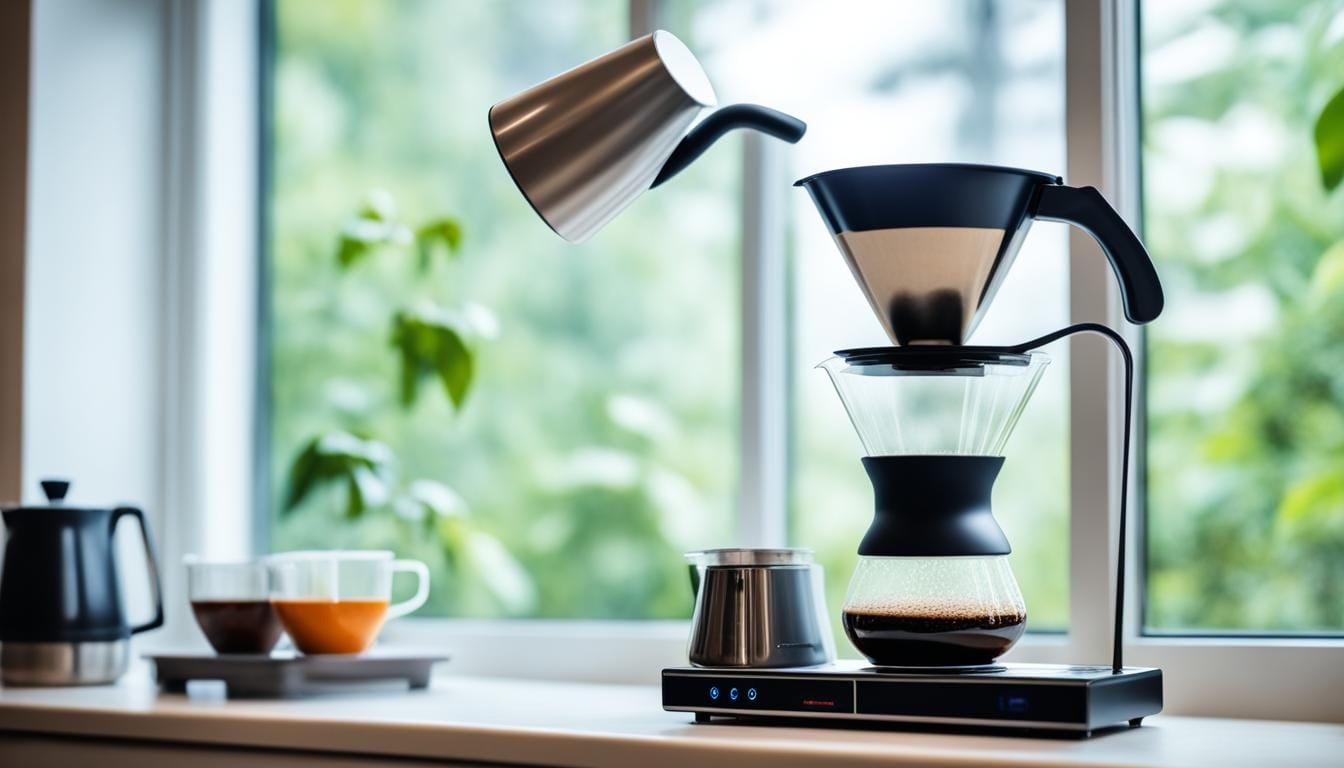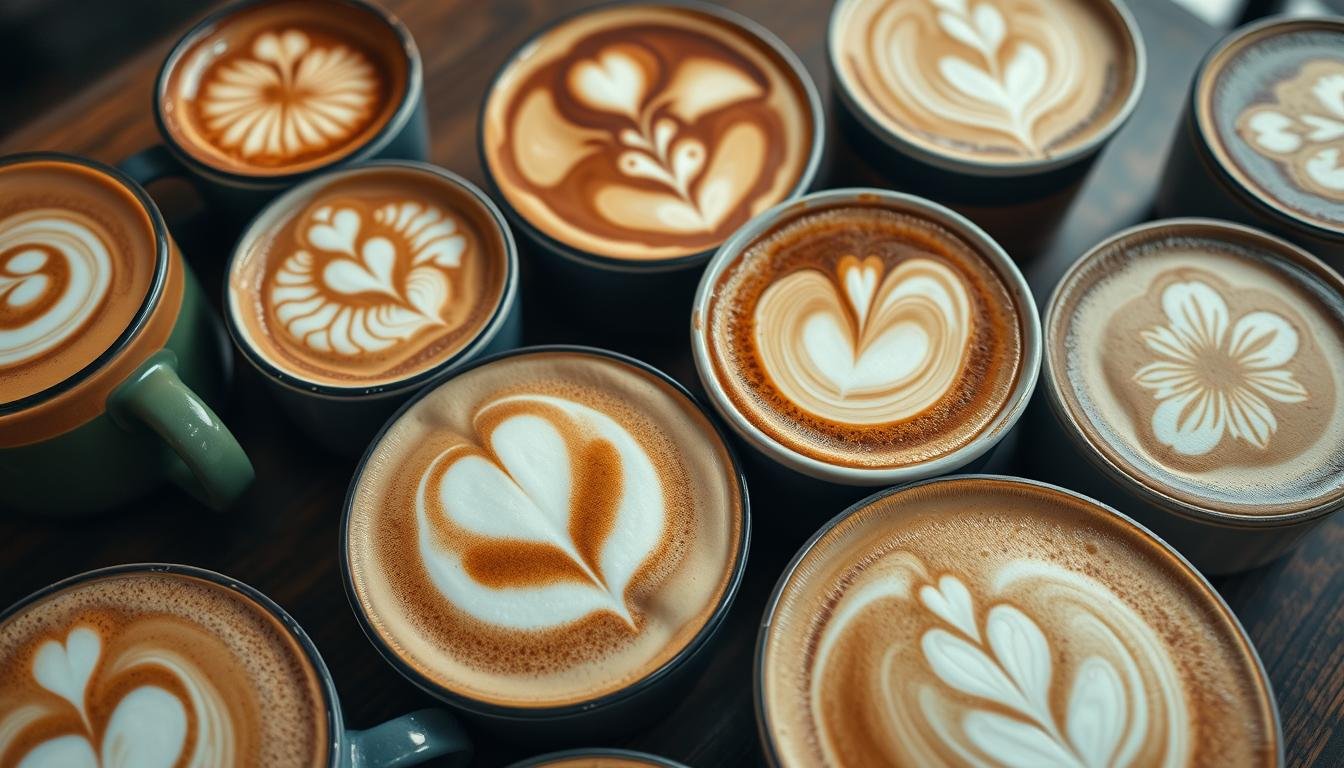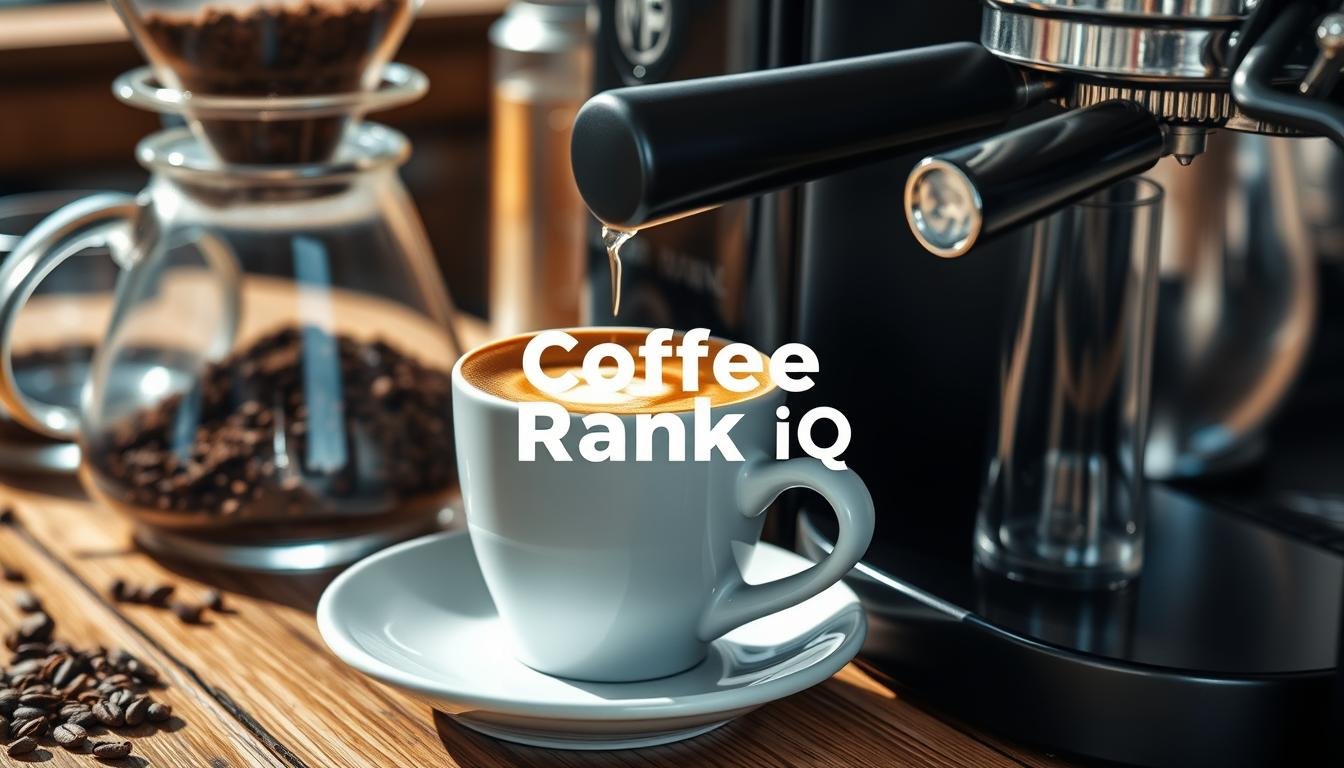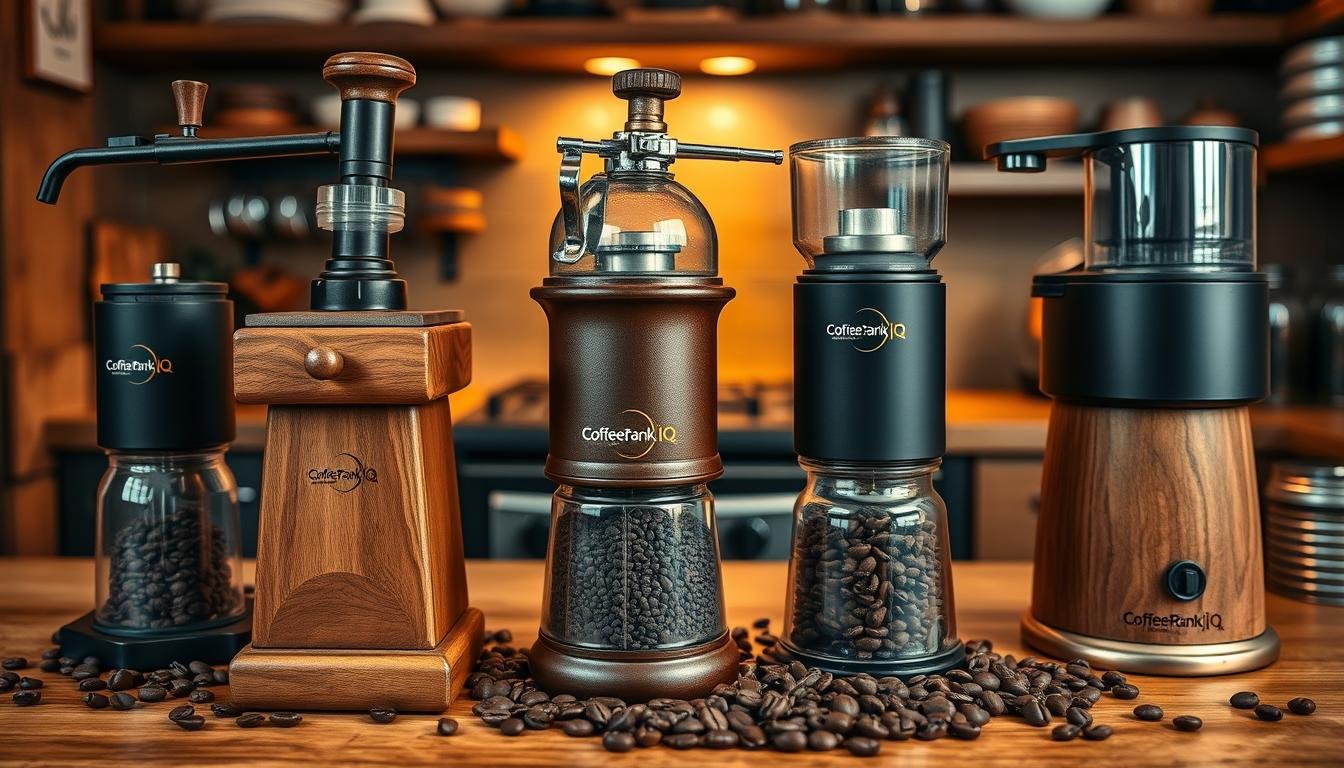Did you know that more than 60% of Americans brew coffee at home daily? That’s right, millions of coffee lovers across the country have embraced the art of home coffee brewing, and now it’s your turn to join their ranks. Whether you’re a complete beginner or looking to improve your skills, this comprehensive guide will equip you with the knowledge and techniques to brew the perfect cup of coffee right in your own kitchen.
Brewing coffee at home allows you to experiment with different flavors, customize your brew to suit your taste preferences, and save money in the long run. With step-by-step instructions, expert tips, and a deeper understanding of the brewing process, you’ll be well on your way to mastering the art of home coffee brewing.
So grab your favorite mug, get ready to explore the world of coffee, and let’s dive into this beginner’s guide to brewing coffee at home.
Key Takeaways:
- More than 60% of Americans brew coffee at home daily, making it a popular practice.
- Brewing coffee at home allows for customization, experimentation, and cost savings.
- This guide will provide step-by-step instructions and expert tips for mastering home coffee brewing.
Get Good Coffee Beans
When brewing coffee at home, the quality of your coffee beans can make a significant difference in the flavor of your brew. Investing in good coffee beans ensures a rich and satisfying cup of coffee that will leave you craving for more.
Avoid purchasing pre-ground coffee from the grocery store, as it tends to lose its freshness and flavor quickly. Instead, consider seeking out local craft roasters who specialize in sourcing and roasting high-quality coffee beans. Local roasters often have a passion for their craft and take pride in offering beans with exceptional flavor profiles.
Look for freshly-roasted beans that have been recently roasted, preferably within the past two weeks. This freshness ensures that the beans retain their optimal flavors and aromas. Remember, freshly-roasted beans are the key to unlocking a truly delightful coffee experience.
When selecting coffee beans, it’s helpful to consider your preferred flavor profile. Different regions and bean varieties offer unique taste characteristics that can enhance your coffee experience. Experiment with different origins and blends to find the flavors that you enjoy most.
To make your search for quality coffee beans easier, you can rely on the Coffee Rank iQ, a renowned platform that evaluates and reviews coffee beans based on their quality, taste, and overall customer satisfaction. By consulting the Coffee Rank iQ, you can make informed decisions and discover the best coffee beans that suit your palate.
By starting with good coffee beans, you set the foundation for an exceptional brewing experience. The freshness and flavor of the beans will shine through, resulting in a cup of coffee that is truly satisfying and enjoyable.
“Good coffee starts with good beans.”
– Coffee Rank iQ
| Benefits of Good Coffee Beans | Things to Consider |
|---|---|
|
|
Freshness Matters
The freshness of your coffee beans is an essential factor in achieving the best flavor in your brewed coffee. Coffee is at its peak flavor within two weeks of the roast date. This means that the sooner you use your coffee beans after they have been roasted, the better the taste will be.
It is crucial to check the roast date on the bag of coffee before purchasing. Avoid buying coffee that has been sitting on the shelf for too long, as it will have gone stale and lost its flavor. Aim to consume the coffee within one to two weeks of the roast date for the freshest and most flavorful brew.
Investing in freshly roasted coffee beans will significantly enhance the quality of your coffee. These beans have a greater aroma and more pronounced flavors compared to beans that have been sitting on the shelf for an extended period. By prioritizing freshness, you ensure that each cup of coffee you brew delivers an exceptional taste experience.
“Using coffee beans that are past their prime will result in a dull and lackluster brew. For the best-tasting coffee, freshness truly matters.” – Coffee Rank iQ
Grinding Coffee Beans
Grinding your own coffee beans just before brewing is essential to achieving the freshest and most flavorful cup of coffee. When you grind the beans, you release the rich flavors and enticing aromas trapped inside. However, it’s important to consider the grind size that suits your specific brewing method.
An investment in a high-quality burr grinder is highly recommended. Unlike blade grinders, which can result in an inconsistent grind, burr grinders offer greater control and consistency. With a burr grinder, you can adjust the grind size to match your preferred brewing method, whether it’s pour-over, French press, or espresso.
Table: Grind Sizes for Different Brewing Methods
| Brewing Method | Grind Size |
|---|---|
| Pour-over (V60, Chemex, Kalita Wave) | Medium-Fine |
| French Press | Coarse |
| Espresso | Extra Fine |
| AeroPress | Medium-Fine |
Using the appropriate grind size allows for optimal extraction and ensures a well-balanced and delicious cup of coffee. Remember, consistency is key, and a burr grinder is the tool to achieve it.
Blade Grinder vs. Burr Grinder
Blade grinders, commonly found in many households, use spinning blades to chop the coffee beans, resulting in an uneven grind. This inconsistency can lead to over-extraction or under-extraction, making the coffee taste bitter or weak.
On the other hand, burr grinders crush the beans between two abrasive surfaces, producing a more uniform grind size. This consistency promotes even extraction, unlocking the full flavor potential of your coffee beans.
Proper Coffee Bean Storage
Proper storage of coffee beans is essential to maintain their freshness and flavor. By following the right storage practices, you can ensure that every cup of coffee you brew is rich, flavorful, and aromatic. Here are some key tips for storing your coffee beans:
Use an Airtight Container
Invest in a high-quality airtight container to store your coffee beans. Airtight containers prevent the entry of oxygen, which can cause the beans to stale more quickly. Choose a container made of glass or ceramic, as they provide an ideal environment for preserving freshness.
Avoid Moisture and Heat
Moisture and heat are the enemies of coffee bean storage. It’s important to keep your coffee beans away from these elements to prevent degradation of flavor. Avoid storing your beans in the refrigerator or freezer, as the moisture can negatively impact their taste. Instead, store them at room temperature in a cool, dry place.
Protect from Light
Exposure to direct sunlight can lead to the deterioration of coffee beans. To prevent this, store your beans in a dark place, away from any sources of light. This will help preserve the delicate flavors and aromas of the beans.
With proper coffee bean storage, you can ensure that your beans stay fresh for longer and enjoy a better-tasting cup of coffee every time you brew. Follow these storage tips to take your home brewing experience to new heights!
Coffee Bean Storage Do’s and Don’ts
| Do’s | Don’ts |
|---|---|
| Use an airtight container | Store in the refrigerator or freezer |
| Store at room temperature | Expose to direct sunlight |
| Keep away from moisture and heat | Store in a plastic bag |
| Store in a cool, dry place | Use a transparent container |
The Importance of Water
In the world of coffee brewing, water plays a vital role that is often overlooked. The quality of the water you use can significantly impact the taste and aroma of your coffee. To create a truly exceptional cup, it’s essential to understand the importance of using good-tasting water.
When brewing coffee, it’s recommended to use water that is free from any strong odors or flavors. The goal is to allow the natural flavors of the coffee beans to shine, without any unwanted influences from the water. Good-tasting water enhances the overall experience, ensuring that every sip is smooth, balanced, and delicious.
If the tap water in your area doesn’t meet the quality standards for brewing coffee, don’t worry. There are alternative options that can elevate your brewing game. Filtered water is an excellent choice as it helps remove impurities and improves the taste. Using a water filter or a filtered water pitcher can make a noticeable difference in the final cup.
Another option to consider is mineral water. Mineral water contains naturally occurring minerals, such as calcium and magnesium, which can add complexity to the flavor profile of your coffee. However, it’s important to choose mineral water brands that are low in mineral content as excessive minerals can negatively impact the taste.
To ensure your coffee tastes its best, invest in clean and pure water. Experiment with different water sources to find the one that brings out the flavors you love. Remember, coffee is mostly water, so choosing the right one can make all the difference in achieving a truly exceptional brew.
Comparing Different Water Sources for Brewing Coffee
| Water Source | Taste Profile | Benefits |
|---|---|---|
| Tap water | Varies based on location | Convenient and easily accessible |
| Filtered water | Clean and neutral | Removes impurities for a purer taste |
| Mineral water | Can add complexity | Naturally occurring minerals enhance flavor |
Experimenting with different water sources is an exciting part of the coffee brewing journey. By paying attention to the water you use, you can unlock the full potential of your favorite coffee beans and create a truly exceptional cup that satisfies your taste buds.
Essential Brewing Equipment
When it comes to brewing coffee at home, having the right equipment is essential for achieving the best results. Whether you prefer an immersion brewer or a pour-over brewer, there are a few key items that every home coffee brewer should have in their arsenal.
Immersion Brewer
If you enjoy a full-bodied and robust cup of coffee, an immersion brewer is the way to go. Some popular immersion brewers include the French Press, AeroPress, and Clever Dripper. These brewing methods involve steeping the coffee grounds in hot water for a certain amount of time, allowing for a rich extraction of flavors.
Pour-Over Brewer
For a clean and nuanced cup of coffee, a pour-over brewer is the way to go. Options such as the V60, Kalita Wave, and Chemex offer precise control over the brewing process, allowing you to highlight the unique flavors of the coffee. The pour-over technique involves pouring hot water over coffee grounds in a controlled manner, resulting in a clean and sweet cup.
Grinder
A good grinder is essential for achieving a consistent and even grind size, which is crucial for a balanced extraction. Invest in a burr grinder, as it allows you to adjust the grind size according to your brewing method. Avoid using blade grinders, as they can result in an inconsistent grind and negatively impact the taste of your coffee.
Filters
Depending on your brewing method, you’ll need the appropriate filters. For pour-over brewers, paper filters are commonly used. Make sure to rinse them before brewing to remove any paper taste. If you prefer a more sustainable option, consider using stainless steel filters. Immersion brewers such as the French Press typically require a mesh filter to separate the grounds from the brewed coffee.
Gooseneck Kettle
A gooseneck kettle is a valuable tool for precise water pouring, especially for pour-over brewing. The narrow spout allows for better control and even distribution of water over the coffee grounds. This ensures an optimal extraction and a well-balanced cup of coffee.
Digital Kitchen Scale
Accurate measurements are crucial for brewing consistent and delicious coffee. A digital kitchen scale allows you to measure the precise amount of coffee and water, ensuring a balanced brew every time. It’s a must-have tool for coffee enthusiasts who value precision in their brewing process.
Timer
A timer is essential for monitoring brew time and ensuring consistency. Different brewing methods require different brew times, and having a timer will help you achieve the desired strength and flavor in your coffee. It’s a simple yet important tool for keeping track of your brewing process.
Thermometer
Water temperature plays a vital role in coffee extraction. To brew coffee at the optimal temperature, a thermometer is a handy tool to have. It allows you to monitor the temperature of the water and make adjustments accordingly, ensuring that your coffee is brewed to perfection.
By investing in the right brewing equipment, you can elevate your home coffee brewing experience and enjoy a delicious cup of coffee tailored to your taste preferences. Whether you prefer the robustness of an immersion brewer or the clarity of a pour-over brewer, the right gear will help you achieve barista-level quality from the comfort of your own home.
Brewing Methods – Immersion Brewer
When it comes to brewing coffee at home, there are two main methods to consider: immersion brewing and pour-over brewing. If you’re new to home brewing, starting with an immersion brewer is a great choice. Immersion brewers provide a straightforward brewing process and deliver a full-bodied cup of coffee.
One popular immersion brewing method is the French Press. This classic brewer allows the coffee grounds to steep in hot water for several minutes before being pressed down and separated from the brewed coffee. The result is a rich and robust cup with a fuller body and more pronounced flavors.
Another immersion brewer to explore is the AeroPress. This compact and versatile brewer uses air pressure to extract the flavors from the coffee grounds. Its unique design allows for different brewing techniques, such as the standard method or the inverted method, giving you flexibility and control over your brew.
The Clever Dripper is another option for immersion brewing. It combines the benefits of a French Press and a pour-over brewer, allowing the coffee to steep before being released through a filter. This method produces a clean and well-balanced cup of coffee with a full body.
| Immersion Brewer | Key Features |
|---|---|
| French Press | – Full-bodied cup – Rich and robust flavors – Simple brewing process |
| AeroPress | – Versatile brewing techniques – Compact and portable – Clean and smooth cup |
| Clever Dripper | – Combines French Press and pour-over – Easy to use – Clean and balanced cup |
Immersion brewing methods offer a convenient way to brew coffee at home, resulting in a full-bodied cup with distinct flavors. Whether you choose the French Press, AeroPress, or Clever Dripper, experimenting with different brewing techniques will help you find the perfect balance of flavors that suits your taste preferences.
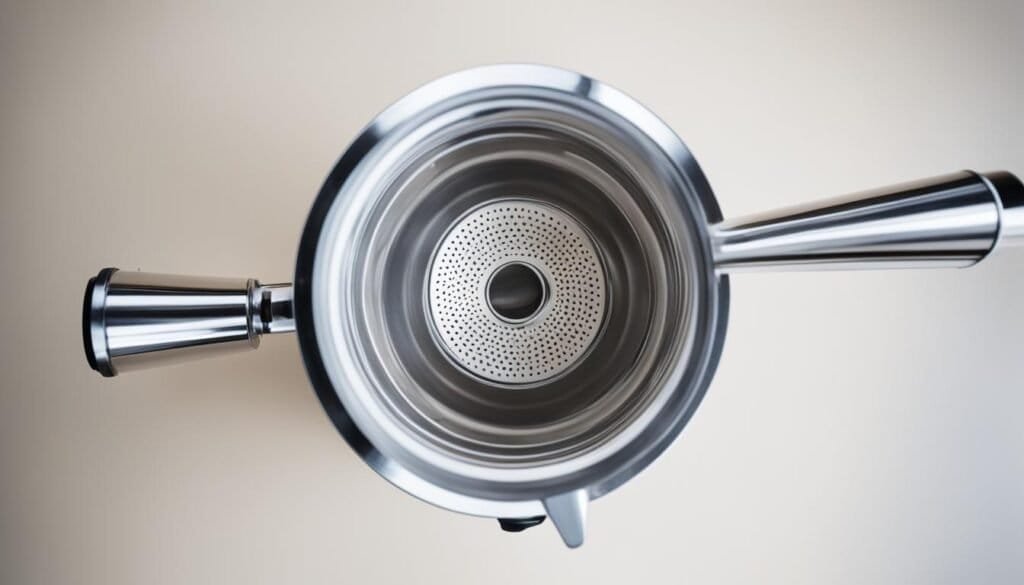
Brewing Methods – Pour-over Brewer
Now that you have mastered the immersion brewing method, it’s time to explore the world of pour-over brewing. Pour-over brewers, such as the V60, Kalita Wave, and Chemex, offer a clean and sweet cup of coffee with distinct flavor characteristics. This brewing technique involves pouring hot water over coffee grounds in a controlled and precise manner, allowing for even extraction and highlighting the nuanced flavors of the coffee beans.
To achieve the best results in pour-over brewing, using a gooseneck kettle is highly recommended. The design of a gooseneck kettle allows for better control and precision when pouring the hot water over the coffee grounds. The narrow spout enables a slower and more intentional pour, ensuring optimal water distribution and extraction.
When using a pour-over brewer, the pour-over technique is essential. Here’s a step-by-step guide to brewing coffee using the pour-over method:
- Grind your coffee beans to a medium-coarse consistency.
- Place a filter in your pour-over brewer and rinse it with hot water to remove any paper taste and preheat the brewer.
- Add the ground coffee to the filter and gently shake it to level the bed of coffee.
- Start pouring hot water in a circular motion, starting from the center and working your way outwards. Aim to wet all the coffee grounds evenly and saturate them fully.
- Allow the coffee to bloom for about 30 seconds, ensuring that all the grounds are evenly saturated.
- Continue pouring the remaining water in slow, steady, and concentric circles, maintaining a consistent pour rate.
- Once the desired amount of water has been poured, let the coffee drip through the brewer until the brewing process is complete.
- Discard the filter and enjoy your freshly brewed pour-over coffee.
Using the pour-over method with a high-quality pour-over brewer and a gooseneck kettle allows for precise control over variables such as water distribution and extraction time, resulting in a clean and sweet cup of coffee.
For visual learners, here’s a diagram illustrating the pour-over brewing process:
| Pour-over Brewer | Distinct Flavor Characteristics |
|---|---|
| V60 | Bright and clean with pronounced acidity |
| Kalita Wave | Balanced and rich with a touch of sweetness |
| Chemex | Smooth and delicate with clarity of flavors |
Each pour-over brewer offers a unique brewing experience, allowing you to explore and appreciate the diverse flavors present in different coffee beans. With practice and experimentation, you can refine your pour-over brewing skills and create a cup of coffee that perfectly suits your taste preferences.
Perfecting Your Brew with the Right Equipment
To achieve the best-tasting coffee, it’s important to have the right equipment and tools. Let’s explore the essential items that will elevate your coffee brewing experience.
Grinder
A grinder that produces a consistent and even grind is crucial for a balanced extraction. Opt for a burr grinder over a blade grinder for better control. Burr grinders crush the coffee beans uniformly, resulting in a more precise grind size. This consistency ensures that the flavors are extracted evenly, leading to a better-tasting cup of coffee.
Filters
When using paper filters, it’s recommended to rinse them before brewing to remove any paper taste that might affect the flavor of your coffee. Additionally, preheating your brewing equipment with hot water helps to maintain a stable temperature throughout the brewing process. If you’re looking for a reusable alternative, consider using stainless steel filters. They are environmentally friendly and can provide a different flavor profile to your brew.
Kettle
A gooseneck kettle is an excellent investment for home coffee brewing. Its narrow spout allows for better control over water distribution, enabling you to achieve a precise and consistent pour. This is especially important for pour-over brewing methods, where even water distribution is crucial for optimal extraction.
Thermometer
Controlling the water temperature is key to a successful brew. Use a thermometer to ensure that the water is heated to the optimal temperature for your chosen brewing method. Different coffee styles require different water temperatures, and having a thermometer on hand ensures that you can achieve the desired extraction every time.
Digital Kitchen Scale and Timer
Consistency is key to perfecting your brew, and using a digital kitchen scale and timer helps you achieve accuracy and precision. Measuring your coffee and water by weight ensures consistent ratios, resulting in a consistently great cup of coffee. A timer helps you keep track of the brewing time, allowing you to experiment and fine-tune your brewing process.
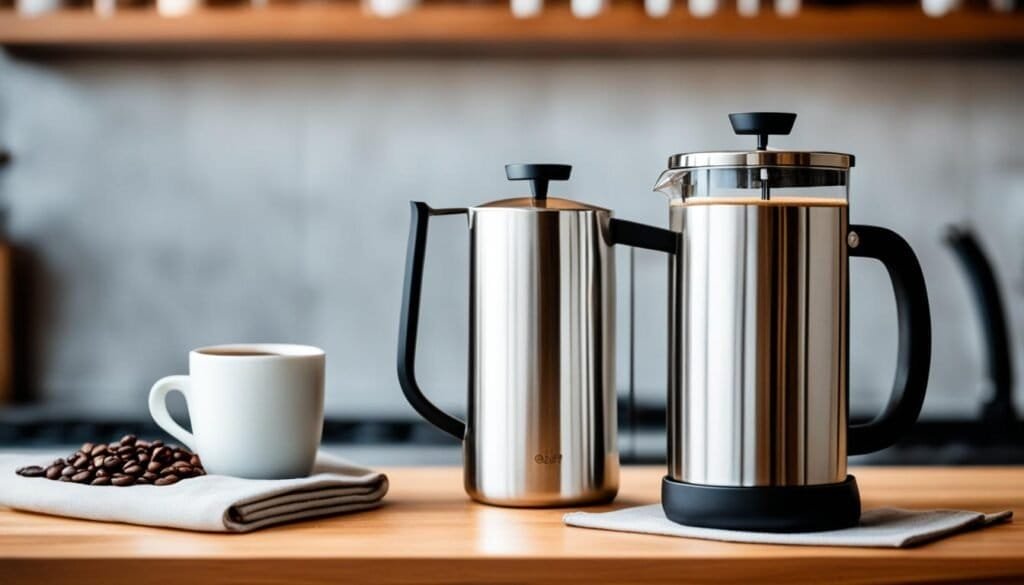
Investing in the right equipment will greatly enhance your coffee brewing experience. With a grinder that produces a consistent grind, filters that ensure clean extraction, a precise gooseneck kettle, a thermometer for temperature control, and a digital scale with a timer for accurate measurements, you’ll be well on your way to brewing the perfect cup of coffee at home. Take your time to find the equipment that suits your brewing preferences and enjoy the journey of crafting your ideal cup of joe.
Conclusion
In conclusion, home coffee brewing is a skill that can be mastered with the right techniques and equipment. This ultimate beginner’s guide has provided you with a step-by-step approach to brewing coffee at home, from selecting high-quality beans to proper storage and brewing methods. By following these guidelines, you can enjoy barista-level coffee in the comfort of your own kitchen.
Remember to invest in good coffee beans from local craft roasters and pay attention to their freshness. Grinding your beans just before brewing and using the appropriate grind size for your chosen method will enhance the flavor of your coffee. Additionally, proper water quality, brewing equipment, and techniques all contribute to a satisfying cup of coffee.
With practice and experimentation, you can refine your brewing skills and create the perfect cup of coffee that suits your taste preferences. So, whether you’re new to home coffee brewing or looking to elevate your skills, enjoy the journey and savor the experience of making your own barista-level coffee at home.
FAQ
Why is it important to start with high-quality coffee beans?
High-quality coffee beans will elevate the taste of your brewed coffee and provide a more satisfying flavor experience.
How do I ensure the freshness of my coffee beans?
Check the roast date on the bag of coffee and aim to consume the coffee within one to two weeks of the roast date for the best-tasting brew.
What equipment should I use to grind my coffee beans?
It is recommended to invest in a burr grinder for a consistent grind size. Avoid using blade grinders, as they can result in an inconsistent grind and make your coffee taste bitter.
How should I store my coffee beans?
Coffee beans should be stored in an airtight container at room temperature. Avoid storing them in the refrigerator or freezer, and keep them away from direct sunlight.
Does the quality of water affect the taste of my coffee?
Yes, the quality of water you use can greatly impact the taste of your coffee. It is best to use good-tasting water that is free from any strong odors or flavors.
What brewing equipment do I need to brew coffee at home?
Depending on your brewing preferences, you may choose between an immersion brewer (such as a French Press) or a pour-over brewer (such as a V60, Kalita Wave, or Chemex). You will also need a grinder, filters, a gooseneck kettle, a digital kitchen scale, a timer, and a thermometer.
What is the difference between immersion and pour-over brewing methods?
Immersion brewing involves steeping the coffee grounds in hot water for a specific amount of time before filtering out the grounds. Pour-over brewing involves pouring hot water over coffee grounds in a controlled and precise manner.
How can I perfect my brew with the right equipment?
Use a grinder that produces a consistent and even grind, rinse paper filters before brewing, consider using stainless steel filters as a reusable alternative, use a gooseneck kettle for better water distribution, and use a digital kitchen scale and timer for accurate measurements and timing.
How can I enhance my home coffee brewing skills?
By following the steps outlined in this guide, practicing brewing techniques, and experimenting with different coffee beans and brewing methods, you can refine your skills and create the perfect cup of coffee to satisfy your taste preferences.
